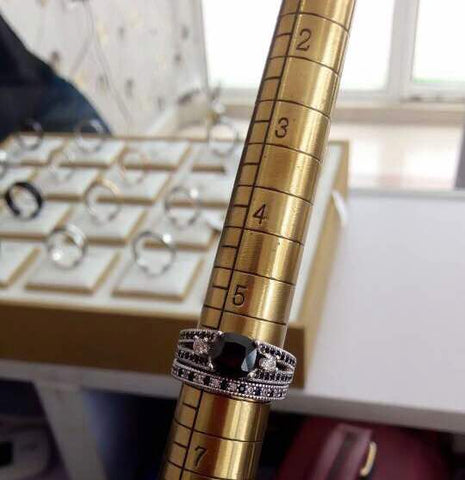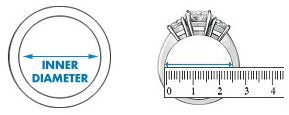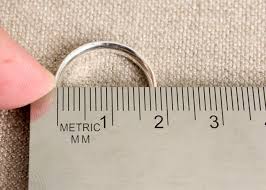How To Find Your Ring Size
METHOD 1
Get to the nearest ring store where you can have your finger sized by a professional jeweler. This is the most accurate method to get to know your ring size.
Our store is located at 31A, Isaac John street, Ikeja G.R.A (opp. Protea Hotel)
METHOD 2
We realise that not all our customers can find time to come to our store to have their fingers professionally sized.
So guess what? We can also ship you a free ring sizer. How cool is that???
- You can request that we send you a ring sizer set. It’s a collection of plastic rings, usually ranging from U.S. size 4 to 13, in half-size increments. Simply try on the rings till you find the one with the most comfortable fit that slides on and off easily.

- Just incase what you have is one of your lady's fashion ring, we can send you a free sizing stick instead. With a sizing stick, you can determine the size of any of her existing rings.

Simply slide the rings on the stick till you find the one with the most comfortable fit that slides on and off easily.
If you'd like to request to have a free ring sizer shipped to you, please call 08099500022. Shipping fees apply.
METHOD 3


Select a ring that properly fits the intended finger.
Measure the INTERNAL diameter of the ring.
Find the corresponding size using our size conversion chart.
TIPS & TRICKS
- Your ring should fit your finger comfortably; snug enough so that it will not fall off, but loose enough to slide over your knuckle.
- Rings should go on with relative ease and come off with a little difficulty.
- Avoid using strings to measure ring size as these materials can stretch or twist, yielding an inaccurate measurement.
- Make sure your finger is at a normal body temperature -- fingers can shrink or expand when cold or hot.
- If you are a guy wanting to make the proposal a surprise, you may need to enlist the help of her friend/sister/cousin to go "ring shopping" together. Her finger gets sized there without her suspecting and you get the information. James Bond style!
PPS: If you need to surprise your lady, and you need some guidance confirming her accurate finger size, feel free to contact us on +2348099500022. A member of our team will be on board to assist you!
Most Common Ring Sizes
Women’s most common ring sizes: 5 - 8
Women’s average ring size: 7
Men’s most common ring sizes: 8 - 12
Men’s average ring size: 10








